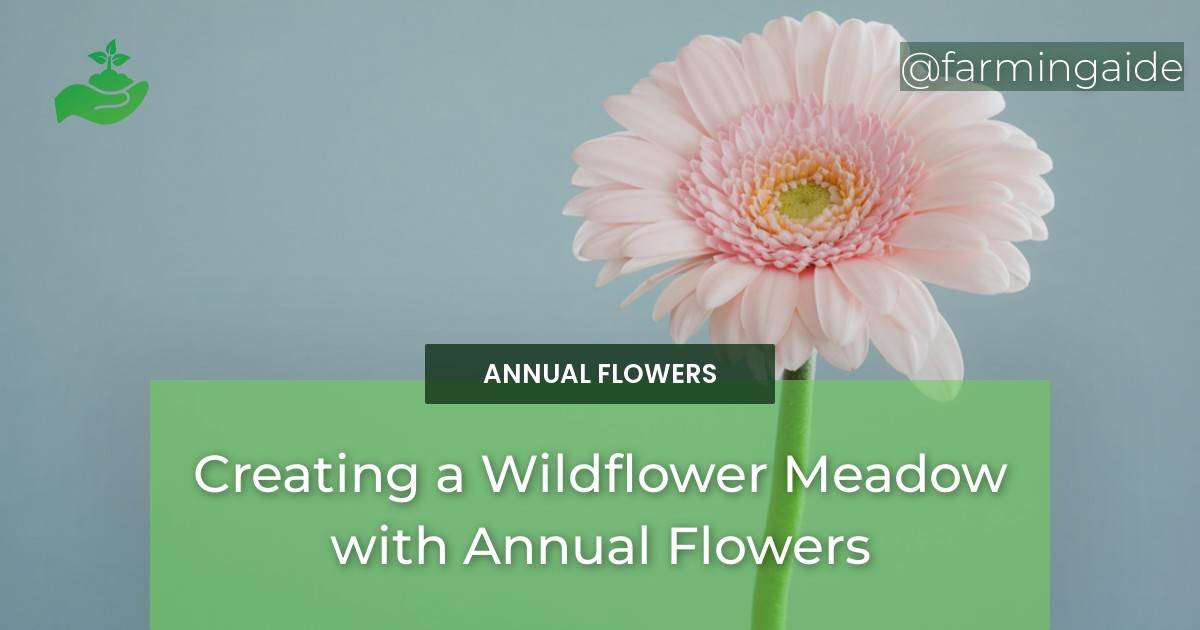If you are looking to establish a wildflower meadow with annual flowers, you are in for a treat. The natural beauty of a wildflower meadow is unmatched, and you can create one right in your backyard. In this article, we will guide you through the process of choosing the right annual flowers, preparing the soil, planting the meadow, and enjoying its beauty to the fullest.
Table of Contents
Benefits of a Wildflower Meadow
Before we dive into the nitty-gritty of creating a wildflower meadow with annual flowers, let’s take a closer look at the benefits of having one in your backyard.
Environmental Benefits
Wildflower meadows are great for the environment. They provide habitat and food for pollinators, which are vital for the ecosystem’s health. They also improve soil health and prevent soil erosion.
Economic Benefits
Creating a wildflower meadow can also be beneficial for your wallet. Once established, wildflower meadows require less maintenance than traditional lawns, reducing the need for costly fertilizers, pesticides, and other chemicals.
Health Benefits
Wildflowers have been shown to have a positive impact on mental health, reducing stress and promoting feelings of well-being. They also improve air quality and help mitigate the effects of climate change.
Choosing the Right Annual Flowers
Choosing the right annual flowers is crucial to the success of your wildflower meadow. Here are some of the best annual flowers to consider.
Sunflowers
Sunflowers are a popular choice for wildflower meadows. They are easy to grow, attract pollinators, and provide a stunning display of color.
Cosmos
Cosmos are another great option for wildflower meadows. They come in a variety of colors, including pink, white, and purple, and are easy to grow from seed.
Marigold
Marigolds are not only beautiful but also help repel pests in the garden. They come in a range of colors and are easy to grow from seed.
Zinnia
Zinnias are a popular choice for wildflower meadows due to their vibrant colors and long bloom time. They also attract pollinators like bees and butterflies.
Preparing the Soil for Planting
Preparing the soil is an essential step in establishing a successful wildflower meadow. Here’s what you need to do.
Soil Testing
Before planting, it’s essential to test your soil to determine its pH level and nutrient content. This will help you determine what amendments your soil needs.
Soil Amendments
Once you’ve tested your soil, you may need to amend it with organic matter, like compost or aged manure, to improve its fertility and structure.
Tilling
Tilling the soil helps to break up any compacted soil and creates a loose seed bed for planting. Be sure to till the soil to a depth of at least six inches.
Planting the Wildflower Meadow
Now that your soil is ready, it’s time to plant your wildflower meadow. Here’s what you need to know.
Timing
The best time to plant a wildflower meadow is in the spring or fall. Be sure to check the seed packet for specific planting instructions.
Seed Distribution
When distributing your seeds, be sure to follow the seed packet’s instructions carefully. You can sow the seeds by hand or use a seed spreader.
Watering and Maintenance
Water your seeds regularly, keeping the soil moist until they germinate. Once established, wildflower meadows require less water than traditional lawns. Be sure to remove any weeds that may compete with your wildflowers for nutrients.
Enjoying the Natural Beauty of Your Wildflower Meadow
Once your wildflower meadow is established, it’s time to sit back and enjoy its natural beauty. Here are some ways to do it.
Photography
Capture the beauty of your wildflower meadow by taking photographs. Share them with friends and family or on social media.
Wildlife Viewing
Wildflower meadows attract a variety of wildlife, from bees and butterflies to birds and small mammals. Enjoy watching these creatures in their natural habitat.
Harvesting Seeds
Harvesting seeds from your wildflower meadow is a great way to save money on future plantings. Wait until the flowers have dried on the plant to collect the seeds.
Conclusion
Creating a wildflower meadow with annual flowers is an excellent way to bring natural beauty to your backyard. By choosing the right annual flowers, preparing the soil, and planting and maintaining your meadow, you can enjoy its benefits for years to come. So, get started on creating your own wildflower meadow today!


